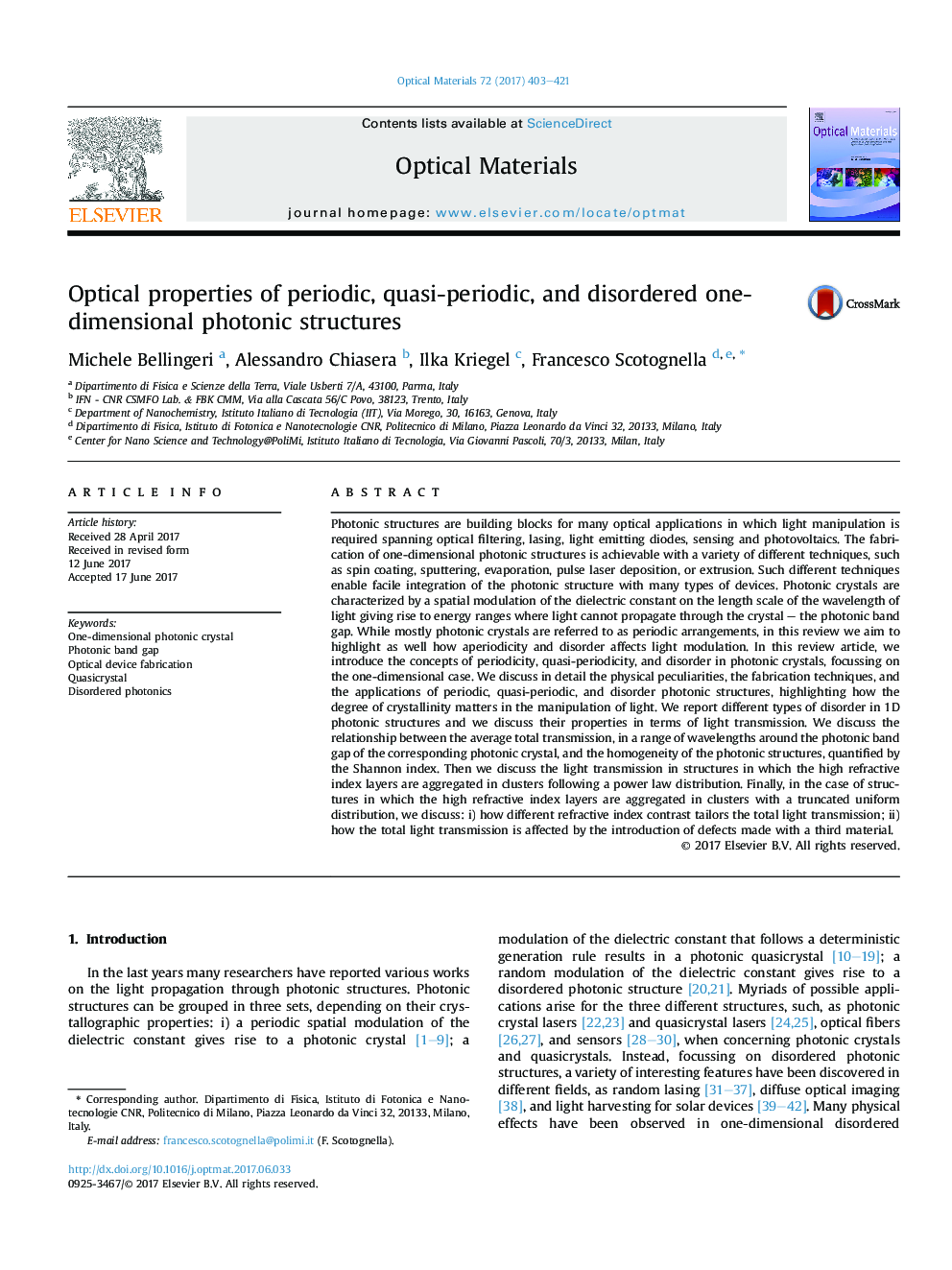| Article ID | Journal | Published Year | Pages | File Type |
|---|---|---|---|---|
| 5442488 | Optical Materials | 2017 | 19 Pages |
Abstract
Photonic structures are building blocks for many optical applications in which light manipulation is required spanning optical filtering, lasing, light emitting diodes, sensing and photovoltaics. The fabrication of one-dimensional photonic structures is achievable with a variety of different techniques, such as spin coating, sputtering, evaporation, pulse laser deposition, or extrusion. Such different techniques enable facile integration of the photonic structure with many types of devices. Photonic crystals are characterized by a spatial modulation of the dielectric constant on the length scale of the wavelength of light giving rise to energy ranges where light cannot propagate through the crystal - the photonic band gap. While mostly photonic crystals are referred to as periodic arrangements, in this review we aim to highlight as well how aperiodicity and disorder affects light modulation. In this review article, we introduce the concepts of periodicity, quasi-periodicity, and disorder in photonic crystals, focussing on the one-dimensional case. We discuss in detail the physical peculiarities, the fabrication techniques, and the applications of periodic, quasi-periodic, and disorder photonic structures, highlighting how the degree of crystallinity matters in the manipulation of light. We report different types of disorder in 1D photonic structures and we discuss their properties in terms of light transmission. We discuss the relationship between the average total transmission, in a range of wavelengths around the photonic band gap of the corresponding photonic crystal, and the homogeneity of the photonic structures, quantified by the Shannon index. Then we discuss the light transmission in structures in which the high refractive index layers are aggregated in clusters following a power law distribution. Finally, in the case of structures in which the high refractive index layers are aggregated in clusters with a truncated uniform distribution, we discuss: i) how different refractive index contrast tailors the total light transmission; ii) how the total light transmission is affected by the introduction of defects made with a third material.
Related Topics
Physical Sciences and Engineering
Materials Science
Ceramics and Composites
Authors
Michele Bellingeri, Alessandro Chiasera, Ilka Kriegel, Francesco Scotognella,
